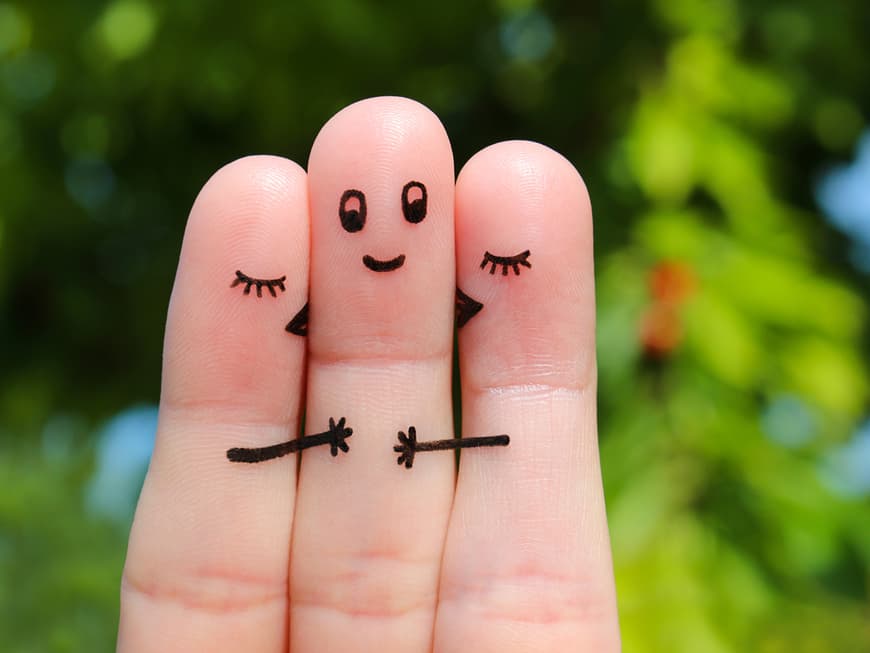
We are not the measure of all things
We so often think that our way of life is the status quo. This is the way it should be and nothing else. But it's not like that at all. Everything is in flux. The way we form relationships has also changed and will continue to change.
- From marriage of convenience to marriage of love: there were long times in our culture when love did not belong in marriage, but was lived outside of it.
- From marriage as a legitimization of sexuality to sexuality without marriage: Our parents and grandparents experienced times when people were only allowed to have sex within marriage.
Today, marriage is even considered a dying form of relationship in this country. Now, however, it seems to be experiencing a renaissance. Since 2015, more people have dared to take the step in front of the altar or the registry office for the first time.
But it can also work quite differently. A look at other cultures shows this. And a look at history also surprises us with many forms of relationships that are quite unusual for us. Of course, much has changed as a result of Christianization, modernization and globalization, with the result that traditional customs have been eradicated in many places. This is what happened to the Eskimos - or Inuits, as they are also known. Before the Europeans declared the old traditions to be unchristian, life and love followed their very own rules.
Erotic history: Anonymous quickie
Polygamy and polygamy side by side
Among the Eskimos in Alaska, each man could have as many wives as he could feed. This was far less about satisfying sexual desires than about ensuring survival in a working community. And that was a tough struggle. There were no large communities; people tended to live in smaller groups. Partnerships were formed very pragmatically. Either the marriage was arranged by the families or a man looked around in the immediate vicinity or in his own settlement. He would choose a woman who was not too closely related to him. Once the bride price had been paid, she moved in with him without a care in the world.
There were no big wedding parties. And if living together didn't work out, the woman was sent back and the bride price refunded. The husband concentrated on hunting, while the wife was responsible for processing the hunting products and looking after the home. Children were most welcome. And this also applied to unmarried women, by the way. If a man took a second or even third wife, it had nothing to do with sexual debauchery, but rather with the increasing workload. The more successful the hunter was, the more manpower he needed. However, it was also possible for a woman to take two men. The advantage of this was that she was protected in the not uncommon event of her husband's death. So both polygamy and polygamy existed in parallel.
Without property, there is no claim to ownership
In contrast to many other cultures, the traditional Eskimos did not place much value on possessions and worldly goods. How could they? In the vastness of the icy desert, a mansion, gold cutlery or precious jewelry would be a hindrance and of little use. Their possessions were therefore limited to clothing, weapons, boats, sledges and tents. In other words, everything they needed to survive.
Perhaps this had something to do with the lack of a claim to ownership over the partners. My house, my yacht, my wife. This principle clearly didn't apply here. And it actually went so far that during overnight stays on extended hunts, one's own wife was offered for bed in a very friendly manner. It was also not uncommon for partners to be exchanged. These customs are also thought to be a matter-of-fact attempt to mix the hereditary material and avoid inbreeding.
Erotic history: Handjob by the lake
Love is also subject to cultural change
The story of the Eskimos shows us once again how much our current way of life is shaped by our living conditions and, above all, is not set in stone. And it shows that feelings such as love and togetherness are also subject to this change. What we expect from love today may be perceived quite differently elsewhere.
Incidentally, the millennia-old way of life and love of the Eskimos came to an unfortunate end with the arrival of Christian missionaries in the first half of the twentieth century. What remains today are people who are largely unable to earn their own living and whose family circumstances are difficult, to say the least. It's the usual thing when "modern" people think they want to teach others the right way to live. It's no different today than it was back then.
Anja Drews - qualified sex educator for ORION
